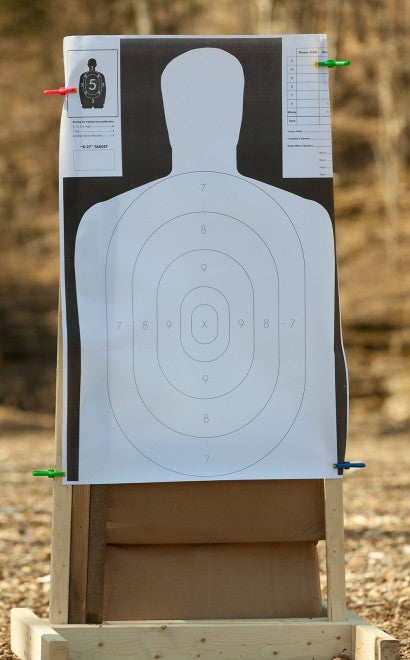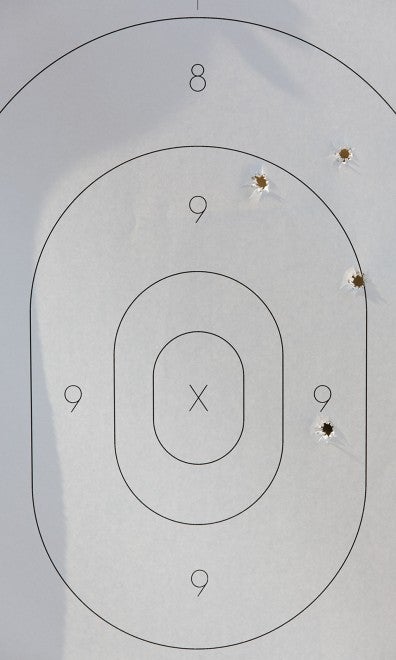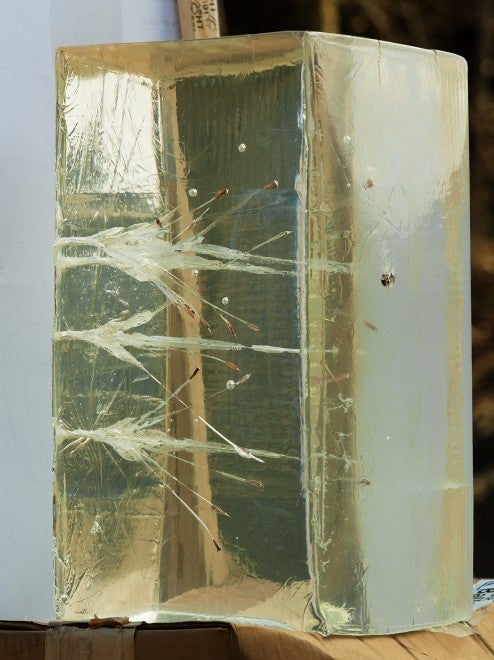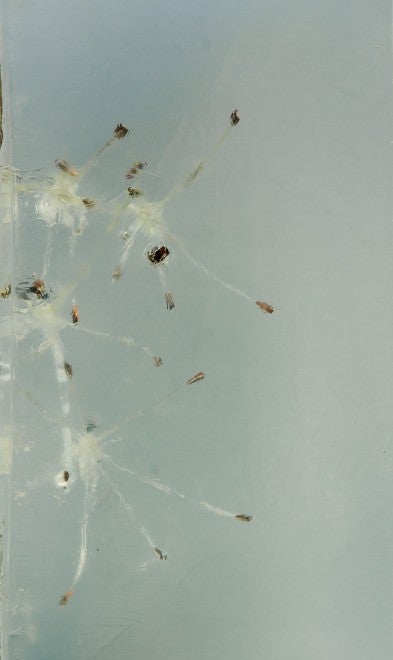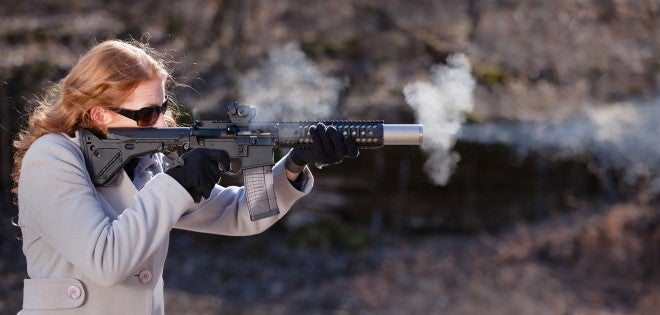Range Report: G2 Research Ammunition
Oleg Volk 02.09.15

G2 Research got ripped pretty badly a year ago for an over the top advertising campaign. Numerous reviews compared performance of G2 Research ammunition to FBI standards, found the results lacking, and dismissed the company as a snake oil seller. I went along with this opinion, even though their ammunition was my favorite DDupleks Hexalit slug in miniature.
At SHOT Show, we were introduced to each other by a colleague and discovered that I lived within an easy day trip from their factory. Today, we met at my local range to play with various ammunition, theirs and other brands as well, and to compare data. I was mostly interested in expanding rifle ammunition, but shot pistols quite a bit as well for the chronograph and the now-mandatory Clear Ballistics gel blocks.
Most of G2 “radically invasive projectiles” are individually machined copper bullets with sharp leading edges and pre-cut fragmentation notches. They stayed together pretty well while passing through a variety of obstacles, like wood and fabric, but fragmented readily when subjected to hydrostatic pressure. The idea is to get the bullet through skulls, breastbones, clothing and other nuisances separating the defender or hunter from the soft vital tissues. The concept works spectacularly well with 12 gauge sized DDupleks slugs, so I wanted to see how it would scale down to G2’s largest currently loaded caliber, 45ACP.
We put up a defensive target with a large gel block behind it.
Our model, more used to her own M1911 than to the DAO trigger of the Boberg XR45-S we handed to her, shot a bit to the right but still hit the block behind the paper.
Of the four shots fired, three produced full penetration of the 10 inch deep block, and one bullet base was stopped at the edge of the block by the 2×4 used to keep it from falling over. Each bullet produced one large wound track and eight smaller, more shallow tracks reaching about 6 inches in depth.
Viewing the secondary tracks head-on, we can see that they take up about 6 inches at the widest point. The theory behind this bullet design is that adequate depth of penetration is only one of several considerations, the other being adequate width of the wound channel(s) to make up for often imperfect placement of defensive shots. In other tests, the base penetrated about 14.5″. It’s retained weight is about that of a 380ACP or a light 9mm Luger bullet, with the rest of the weight distributed between sharp individual segments. The action is similar to folding broadhead arrow tips. Since everyone who works at G2 Research is a shooter, they’ve applied their ammunition in practice, successfully taking 200-pound wild hogs with 300 Blackout rifle and pistols in 9mm and 45ACP, all using their own RIP ammunition.
My own interest was more with their expanding bullets. I wanted to know if their 300 Blackout subsonics and 223 Remington loads would expand reliably from short barrels.

Subsonic 300 Blackout Trident load with 200 grain hollow-point bullet performed extremely well even from the diminutive 6 inch barrel of the suppressed carbine. This quiet bullet expanded to the same three times of the original diameter within four inches of impact and penetrated 16″ into the gel. Shooting the same round from a 16″ barrel increased penetration to 19.5″ without altering expansion. To me, that seems like excellent performance. G2 also loads the expanding Trident round in 300BLK to supersonic velocity (110 grains) and makes sub- and supersonic versions with the fragmenting RIP bullet designed to disperse half of its trocars upon impact and the other half deeper in the target. I have not tested them in gel today but plan to try them in the near future.
We did shoot supersonic Trident bullets at steel targets at 75 meters and found accurate shooting aided by an unexpected feature, vapor contrails. The expansion cuts in the projectiles caused the same faint traces even in the dry winter air that we see on airplane wingtips. The contrails were wide enough to be visible to the shooter and the observers even during the short flight time at the range, and were quite helpful for calling the direction of any misses.
We also discovered that a Taurus 905 revolver chambered in 9mm Luger yielded about 1250fps despite the short 2-inch barrel. At seven yards, the two-inch group was comparable to other 9mm Luger munitions but with milder recoil thanks to the lighter bullet weight. Judging from the tests with cloth-covered gelatin, the sharp leading edges of the bullets reduce the amount of energy used up on the initial penetration of cloth (or skin), cutting rather than pushing through.
So there’s a lot more to G2 Research than their early, over the top ads suggested. I plan on testing more of the ammunition for myself, and will post the results as I get them organized.
